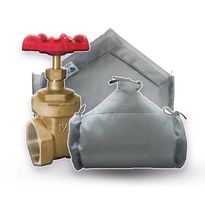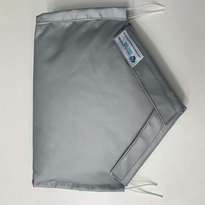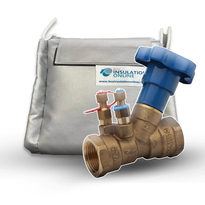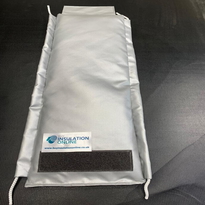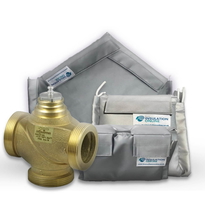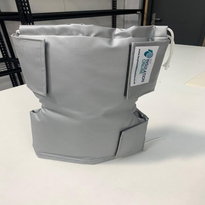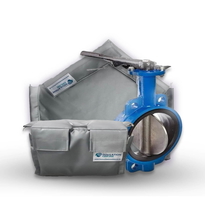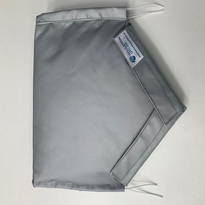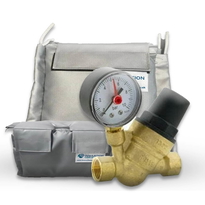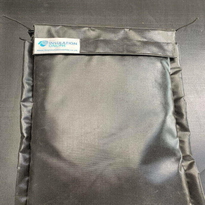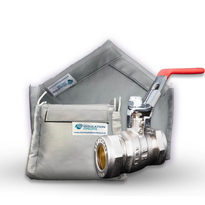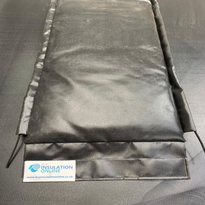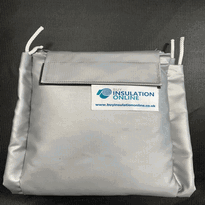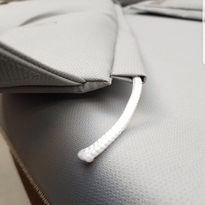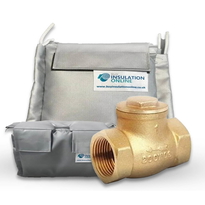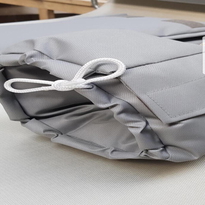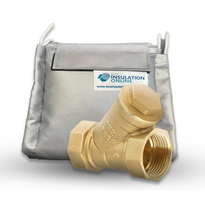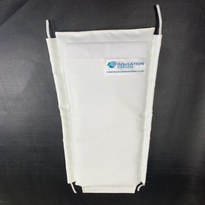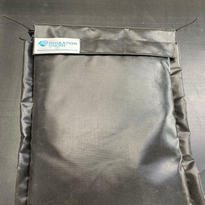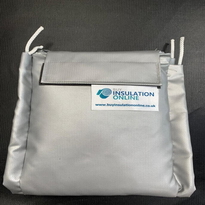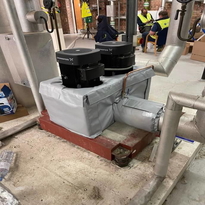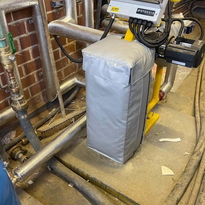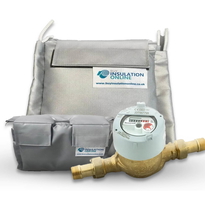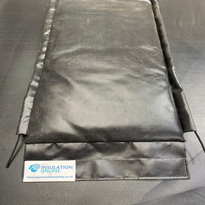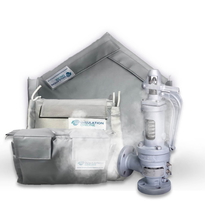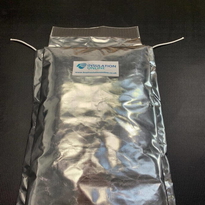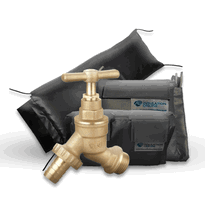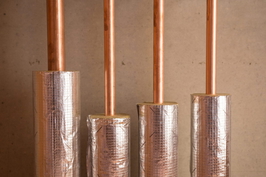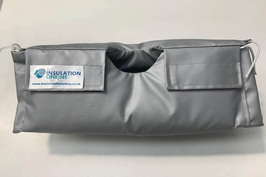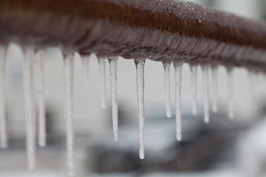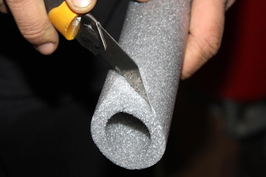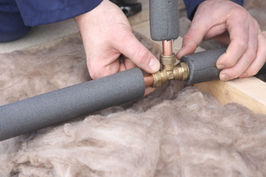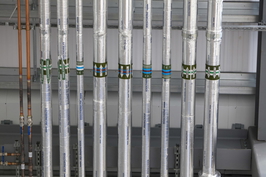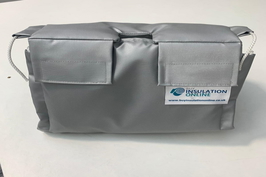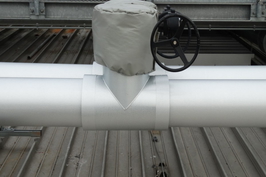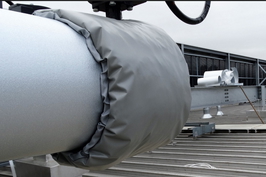Insulation Blankets for Valves
Insulation blankets for valves are crafted from robust materials such as fiberglass cloth, silicone or Teflon coatings, and ceramic fiber insulation to endure high temperatures, mechanical stresses, and exposure to chemicals. These blankets serve to improve energy efficiency, minimize heat loss, and enhance safety by preventing burns. Their customizable features—including removable sections, adjustable straps, and industry-specific variants—allow for a precise fit across a wide range of applications.
Continuing to explore this topic offers a comprehensive understanding of their practical integration within industrial environments.
Materials and Design Considerations
Materials selection and design considerations are essential to ensuring the effectiveness, durability, and safety of insulation blankets used for valves. These blankets typically incorporate fiberglass cloth for the outer lining, which provides a consistent thickness and tensile strength capable of withstanding mechanical stresses. Fibreglass cloth's durability and flexibility make it a popular choice for high-temperature insulation applications. To enhance durability and chemical resistance, silicone or Teflon coatings are often applied, particularly in challenging environments. The choice of material properties such as fire safety ratings and moisture resistance further influences their suitability for specific applications.
Ceramic fiber insulation is utilized in high-temperature applications due to its excellent thermal efficiency and resistance to extreme heat. Reinforcement of seams with aramid threads further strengthens the blanket, enabling it to withstand elevated temperatures and mechanical stresses.
High-silica cloth can also be incorporated to provide additional protection against intense heat and exposure to chemicals.
Design features play a crucial role in the performance and maintenance of insulation blankets. Removable components allow for easy inspection and replacement, while customisable dimensions ensure a proper fit for various valve sizes and configurations.
Secured fastening mechanisms, such as adjustable straps or clips, ensure reliable attachment during operation. Additionally, selecting materials that are compatible with specific temperature ranges and environmental conditions maximises effectiveness while facilitating simple maintenance and adaptation to diverse operating scenarios.
Benefits of Using Insulation Blankets on Valves
Applying insulation blankets to valves provides numerous advantages, especially in terms of enhancing energy efficiency and lowering operational costs. These blankets effectively minimise heat loss, resulting in decreased energy requirements, which in turn enables facilities to save money that can be allocated to other critical areas. Many insulation blankets pay for themselves within less than a year, making them a highly cost-effective investment for maintenance budgets.
By conserving heat, insulation blankets boost process efficiency and contribute to lower carbon dioxide emissions, supporting wider sustainability objectives. The key benefits include:
- Reduction in heat loss, leading to decreased energy consumption
- Cost savings through lower energy bills
- Prolonged lifespan of equipment by protecting against thermal stress
- Improved safety by preventing burns and enhancing workplace security
Additionally, employing high-performance membranes and airtight sealing techniques helps in maintaining optimal temperature control, further improving energy efficiency and safety standards. Collectively, these advantages foster more efficient, cost-effective, and environmentally responsible operations.
The utilization of insulation blankets ensures consistent thermal management, reduces the need for frequent maintenance, and helps in maintaining compliance with safety standards. As a vital component in modern industrial facilities, insulation blankets play a crucial role in supporting operational reliability and safety in the UK industry.
Customization and Application in Various Industries
Customization of insulation blankets is vital to ensuring their effectiveness across a wide range of industrial applications, as each sector presents unique operational conditions and performance needs. Tailoured options include various fitment and design features, specific materials suitable for extreme temperatures, and closure systems such as Velcro or drawstrings that allow for easier installation. For example:
Industry |
Temperature Range |
Key Feature |
| Oil & Gas | -50°C to +1,100°C | Weather seals and fire protection |
| Power Generation | -50°C to +1,100°C | Easy removal and reinstallation |
| Chemical Industries | -50°C to +1,100°C | Leak detection features |
| Construction | -50°C to +1,100°C | Durable double sewing |
These customizations ensure that insulation blankets meet the specific operational demands of each industry, enhance safety measures, and optimise energy efficiency in their respective environments. The ability to choose different closure systems further enhances their ease of use and suitability for various installation scenarios. Additionally, selecting appropriate thermal materials ensures the blankets can withstand extreme temperatures without degradation or loss of insulating properties.
Conclusion
Insulation blankets for valves improve energy efficiency, minimize heat loss, and protect personnel by providing thermal insulation. Choosing suitable materials and designing customized solutions ensure optimal performance across various industries such as oil, gas, and manufacturing. Proper application requires understanding the specific operational environment and securely attaching the blankets to prevent gaps or damage. Implementing these measures results in enhanced safety, cost savings, and the preservation of equipment integrity. Overall, insulation blankets represent a practical and dependable option for thermal management in diverse industrial settings.









